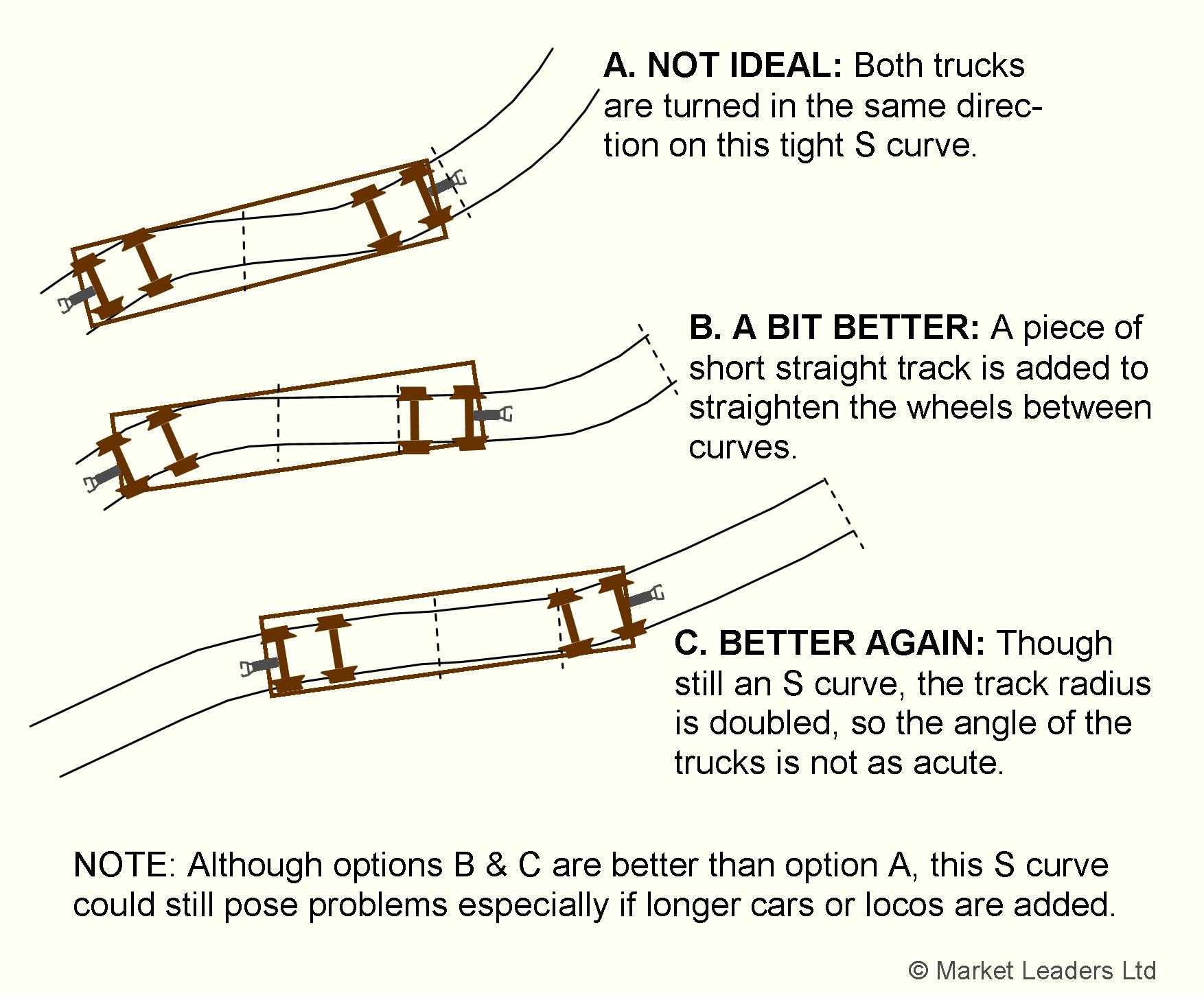Everything on model trains, model railroads, model railways, locomotives, model train layouts, scenery, wiring, DCC and more. Enjoy the world's best hobby... model railroading!
S-Curves can Derail Trains
S-curves can be a railroader’s worst nightmare, yet they are a feature of many track plans because they can add interest to a layout. If you are going to add an S-curve, plan it carefully. That means that you need to have at least one straight section of track at as long as your longest car between the curves. Otherwise, regular derailments might become unwanted events on your layout. Fixing a problematic S-curve can be exceptionally hard once the track is permanently placed.
One of the most challenging placements for an S-curve is just beyond a turnout. Avoid having a curve in the opposite direction immediately after the turnout diverges. Follow the straight section between changes of direction practice described above.















Hi ,Robert,
Fred Anderson here from Australia. I am going to start to build a two track with scenery on a board that runs around my second bedroom (called train room) and was thinking about putting a s curve in. Now I will be thanks to your Blog. Have been reading all your blogs an find them to be of great relevant Thanks .
PS will be starting my build in about July this year an taking snaps and videos.
Thanks Fred for your kind words, and enjoy working on your layout.
The longer the straight section between the curves is better. This can sometimes be achieved by using smaller radius at either end of the straight section. I have found that UK OO carriages handle a crossover between two #6 turnouts, with the couplings set to avoid buffer locking.
Curves can be sneaky – they hide where you least expect – in straight classification and shunting yards. They don’t cause too much trouble there because the speed of trains should not be faster than the walking speed of the shunter’s offsider. But if you have difficulty with derailing in your yards do the following-
1. check wheel s are in gauge and that the back to back in withing the recommended practice
2. make sure your wagons etc are weighted correctly according to the NRMA RPs
3. keep the speed down
4. make sure your couple wagons/locos couplers have sufficient sideways swing to let them go round corners. I fixed KD number fives to a South Australian Alco by Lima and a train that had never given problems began derailing the trailing bogie – it was jamming against the coupler box and bogie side frames. Judicious Dremelling ground the offend plastic and all is now OK.